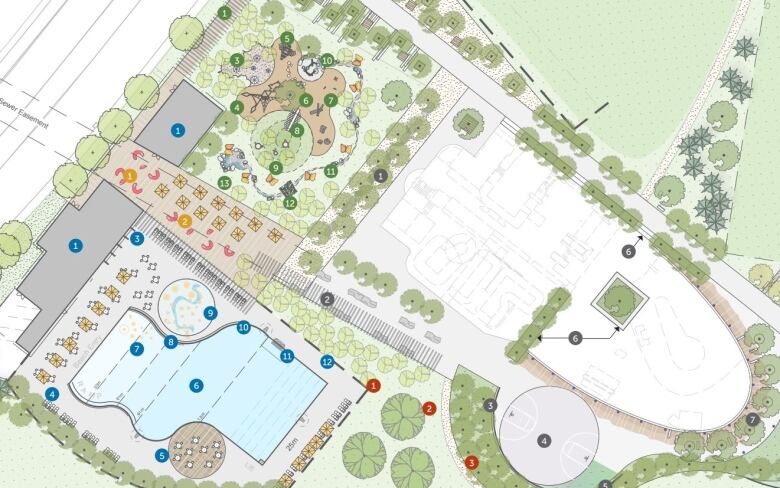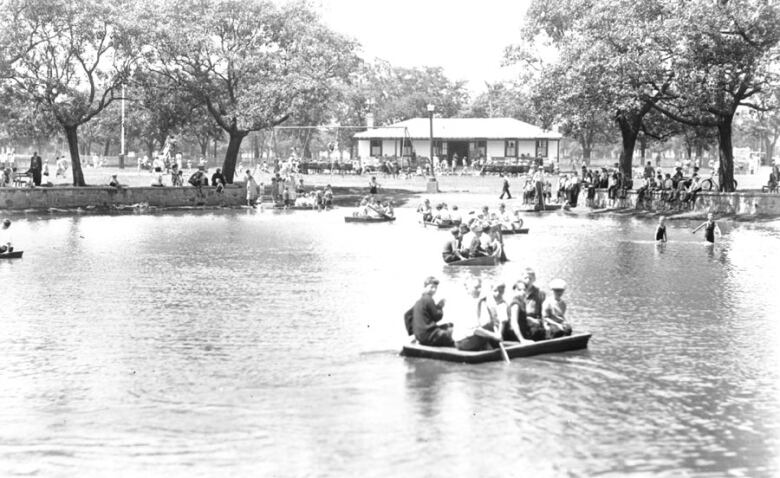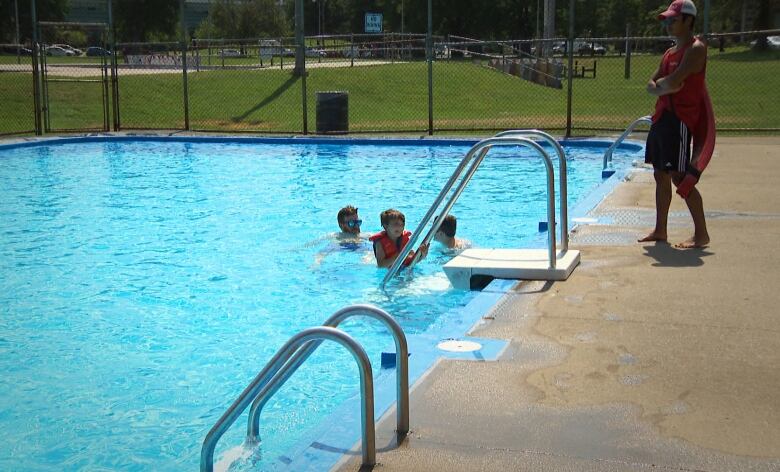Contaminants found in testing on Halifax Common could date back to Explosion
Report shows elevated levels of benzene, iron, arsenic, lead, hydrocarbons

Some contaminants discovered near the pool on the Halifax Common could be left over from the Halifax Explosion.
The city is planning to replace the outdoor pool at the Common and revamp the area surrounding it.
As part of its preparations, it conducted soil testing last year and found contamination that exceeded the allowable provincial guidelines.
The environmental testing report, released to CBC News under freedom-of-information laws, shows elevated levels of benzene, metals and polycyclic aromatic hydrocarbons, or PAHs.
Benzene, a component in gasoline, has historically been used to degrease metal and strip paint, and is also one of the byproducts of burning coal. The report from Strum Consulting notes that the chemical profile of the benzenefound on the Common resemblesthat of lube oil.
It also noted that the elevated benzene level, roughly twice the acceptable limit, found in one test hole may be related to historical coal burning on the Halifax peninsula.

The testing also found elevated levels of iron, arsenic and lead.
The iron, which was up tothree times higher than the acceptable levels, and the arsenic, which was up to seven times higher, are likely typical of the background levels of those metals on the peninsula, the report said.
Lead was elevated in just one test hole, but at a level that was almost six times higher than the acceptable amount. The report suggested that contamination was site-specific, and not indicative of widespread background levels.
That was also the case for the elevated level of PAHs, which were found in one hole to be roughly three times the acceptable level. PAHs are found in coal and oil and are produced by burning organic matter.
The municipality is conducting more environmental testing to determine how widespread the contamination is before it moves forward with the aquatics project, which will see the pool, Pavilion building, splash pad and playground replaced.
Depending on provincial approval, construction could start this winter and be completed in 2023.
'Long history of use'
Municipal spokesperson Erin DiCarlo said since the Common has "a long history of use," it is impossible to determine the source of contamination.
But she said lead, benzene and PAHs "are believed to have been spread across the Common during the Halifax Explosion." The wartime explosion in Halifax harbour killed nearly 2,000 people in 1917.
"They are being risk-managed in accordance with provincial regulations and do not post a threat to human or ecosystem health," DiCarlo said in an email.
In 2003, elevated levels of arsenic were found on playgrounds in cities across Canada, including at the Halifax Common, due to pressure-treated lumber used in play structures.

The Halifax Common was designated in 1763 and originally covered the entire area from Cunard Street to South Street on itsnorthern and southern borders, and Robie Street to South Park Street on itswestern and eastern borders.
The Halifax Common as a whole has historically been used for everything from a source of firewood and pasture to a horse racing track, and over time, much of it has been taken over by public buildingsincluding hospitals, schools and museums.
The specific area of the Halifax Common in question, part of what's called the Central Common, has been used as a playground and pool for decades. The existing skate park was once the Egg Pond, a drainage area for a brook that ran through the Common.

Peggy Cameron of the group Friends of the Halifax Common, said the building known as the Pavilion once an all-ages music venue was used as a public vaccination centre during the polio epidemic.
Shesaid the contaminants on the Common are "of concern," but she's confident the municipality will take care of themas thearea is redeveloped.
Cameron said she's more concerned about toxins that will be emitted from the parking garages slated to be built nearby. The province plans to build a 500-space garage next to the Museum of Natural History, as well as a 1,000-space garage on the site of the former CBC building next to the Halifax Infirmary.
"Directly across the street, there's going to be a thousand-car parking garage, so there's all those emissions just across the street," she said. "I don't think they've done a full analysis of what the implications of that are."












_(720p).jpg)


 OFFICIAL HD MUSIC VIDEO.jpg)
.jpg)



























































































